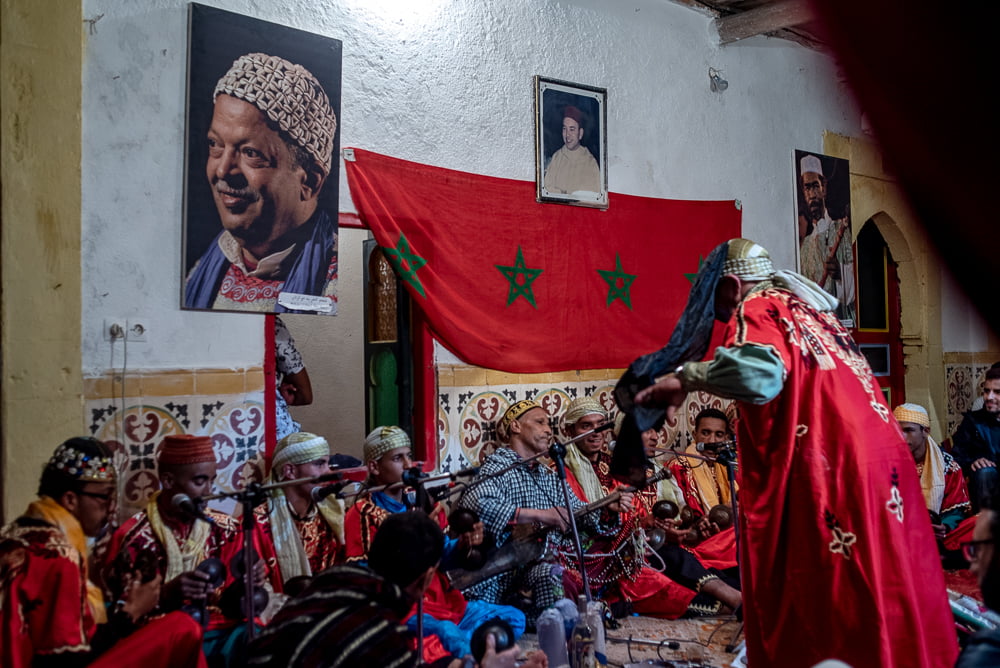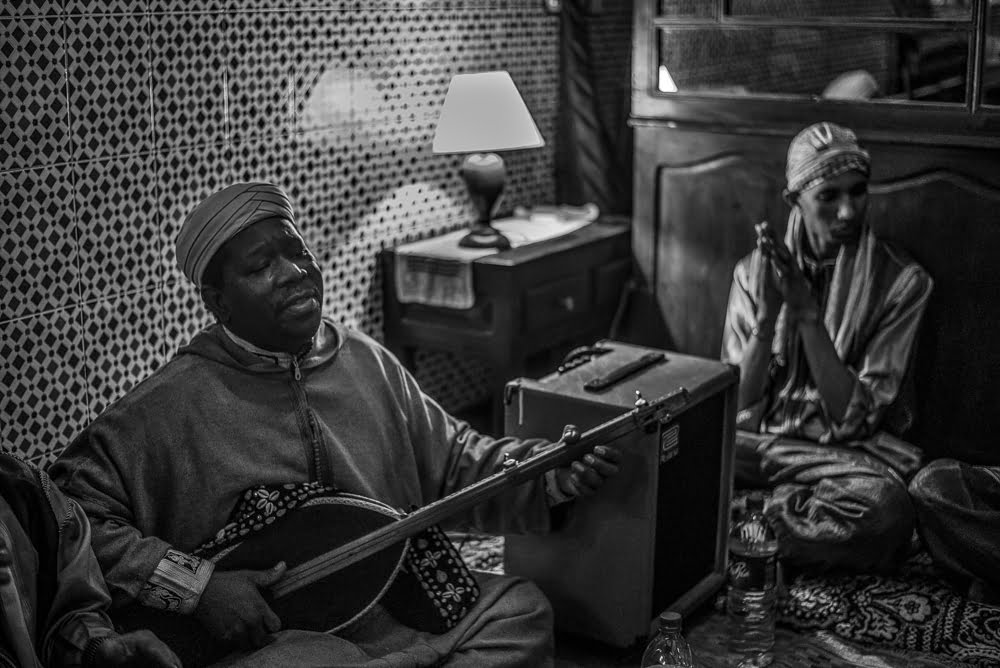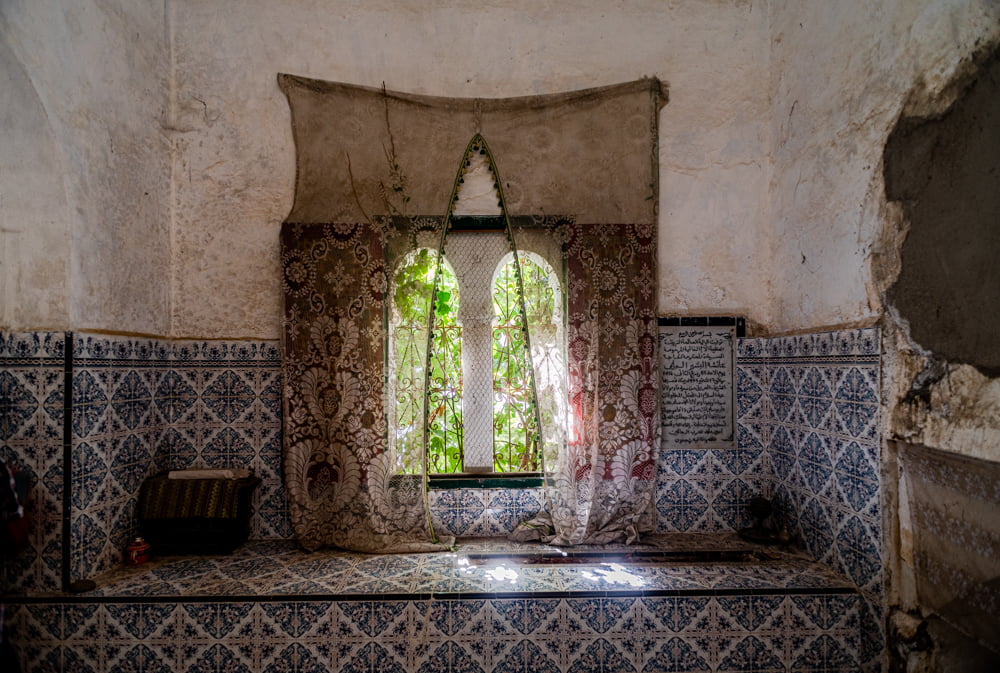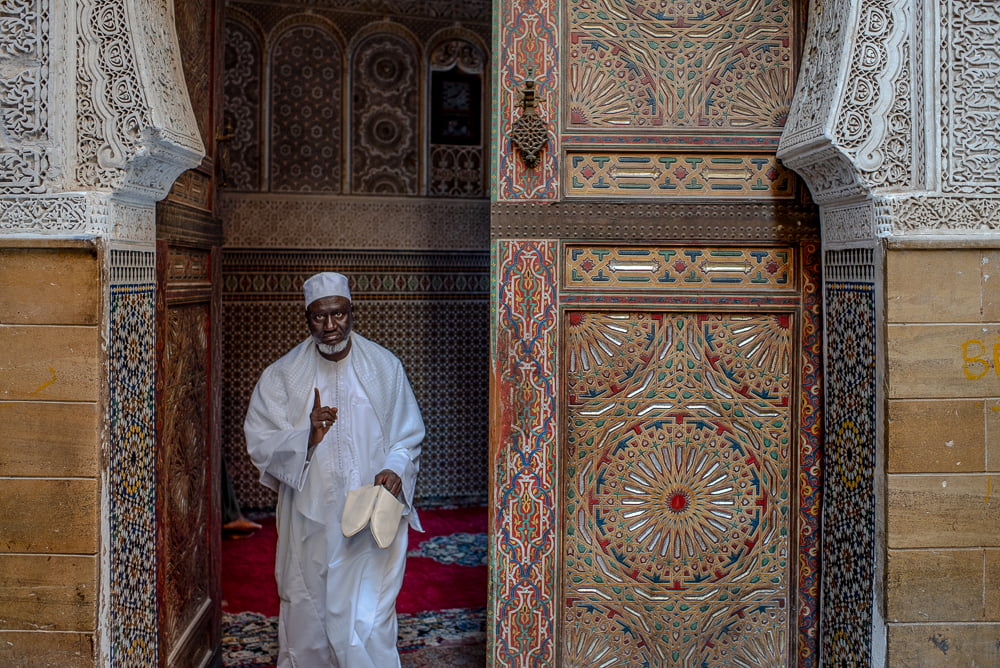UNFINISHED POST
We shall not cease from exploration and the end of all our exploring will be to arrive where we began and to know the place for the first time.
Little Gidding T.S. Elliott
It may seem incongruous to entitle a page about Islamic and African culture with a quote originating from the heart of English literature. There are however substantial reasons for doing so which relate mainly to my own cultural orientation and state of mind. I need to extricate myself a little from affiliation with Morocco.
I have now spent a long time in Morocco, travelling down from the north and visiting interesting sites along the way. My main focus has been visiting Sufi shrines and tombs often associated with zaouias as well as exploring the role of healing illness through music. The two areas are however inter-connected; it is predominantly the Sufi brotherhoods through networks of zaouias which perform traditional healing music. An important addition to this group is the Gnaoua who have no Sufi heritage. Instead they bring ritual and belief from middle Africa and transpose their animist culture into the melange which is multi-ethnic Islamic Morocco. Essentially they perform the same healing role as the Sufi brotherhoods.
The underlying assumption shared across these groups is that invisible spirits range widely throughout society, mostly replicating the lifestyle of humans in their own dimension. Some spirits are considered capricious and hostile and are believed to decide to inhabit or occupy humans which can cause illness, or ‘malady’. The presence of these spirits are given validity by references regarding their creation in the Qu’ran; they are formed from ‘smokeless fire’ whereas humans are formed from ‘clay’. The Qu’ran provides further details about hierarchies of spirits which suggest differentials in terms of associated strengths and powers. Although the more powerful have individual names and significant personality traits, these spirits are collectively called Djinns ( masculine ) and Djnniyya ( female ); and their presence and capability of possession is found right across the Islamic world.
A further assumption shared across these groups is that music, ritual, prayer and animal sacrifice can propitiate the djinn and, inter alia, bring remedy and peace to the afflicted. These are traditional methods of treating illness within a Moroccan society where educaton, money or access to conventional medicine has largely been historically minimised. With modernity now in Morocco, things should have changed. Have they?
I began this journey in 2016 when I visited the Gnaoua World Music Festival in Essaouira. With grateful thanks to Navs Sangwan, originator of online magazine Bizarre Culture ( search for my name and some articles remain ) which I sometimes contributed to, I managed to obtain a press pass and enjoyed relatively unfettered access to the Festival’s acts. My main personal aim was to explore the cultural relevance of the Festival, especially how it had been developed primarily by local Andre Azoulay to accord with a vision of unifying conventionally divided Arabic/Judaic faiths, bulding on the inherent ‘baraka’ within Essaouira to create an alternative ‘moussem’ which appealed to as wide an ethnic base as possible. This was a bold and inclusive political initiative to intentionally create a rare safe environment within the Arab world irrespective of faith.
Collecting photographs of the music was almost secondary and interest in the sacredality/profanity of the music initially low down on my agenda.
With exposure to the music initially in local cafes, then in the main arena in Moulay Hassan square and latterly in discrete concerts where traditional and sacred forms were explored, it quickly became evident that the ‘profane’ musical form, with no spiritual connotation, was extremely popular and had developed a ‘fusion’ identity with music and musicians from both Africa and the West. The ‘sacred’ form was struggling within a world which was changing around it but it interested me far more than the ‘profane’ style.
I wrote an article, supported by photographs describing Andre Azoulay’s vision plus the tensions between the Gnaoua’s divided musical forms. It can be seen here.
After the festival it was some time before I could return to Morocco. A number of complex events occured, including the death of a dear friend who I supported almost daily for over 6 months until his demise, all of which cumulatively affected my health. Eventually I did return, integrating the travel into my treatment plan and starting again in the north made my way slowly down to Essaouira. One of the main goals was to document the colours of the medinas in the major cities I visited. Other priorities were to explore the tombs and saints of those cities, focussing on the Marabout and Sufi tombs particularly those which provided healing through music and/or ritual. Lastly I hoped to become better acquainted with Morocco’s Jewish legacy, exploring the Mellahs wherever I visited. I had also read Vincent Crapanzano’s ‘Tuhami: Portrait of a Moroccan’, which detailed the possession of a male resident of Meknes by a djiniyya called Aisha Qandisha.
Although staying in Tetaoun for several weeks it was only in Chefchaouen that I really got going, documenting the zaouias there. My host and friend Elizabeth lived next to the zaouia el Chacour, one of the most important in the town. It was however the undeveloped, simple and atmospheric zaouia Sidi Bouhari, located behind a mostly locked door just off Place Outa Hammam and behind the zaouia Qadyra, which most appealed. It was extremely difficult to secure access regularly though the few times I did visit it I found its aging patina and character charming.
I had read increasingly of the role of ‘baraka’, of how the healing force of Allah was transmitted through the shrines of walis ( saints ), and how the baraka of saints could be passed onto others, particularly their followers. I read about rituals, tariqahs and coded handshakes which signified acceptance into a particular tariqah and even a transfer of saintly power to another. I read of the vocabulary of Sufism where idealisation of xxxxxxx
Although healing and the banishment of djinn was one part of the ensemble, perhaps the most fundemental aspect was the development of an association with the divine where one became indivisible with the divine. This was achieved through rituals of repetition and trance-induced ecstatic states where changes in consciousness affirmed spiritual experiences and unity.
My journey took me south through Oezzane, down to Fez and then Meknes.



